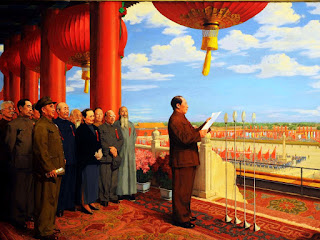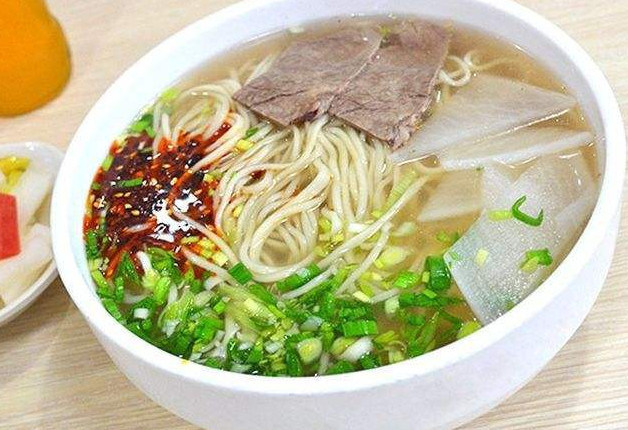Why Do Chinese Love Red Color?
Chinese red is the most beautiful and classic Chinese element. It reflects the active and enthusiastic national character of Chinese people. Chinese people love the red color so much that you can find proof everywhere, like the red walls of the majestic Forbidden City, the Chinese knot, the red couplets, paper-cutting pasted on panes, the traditional headcover for the bride, etc. Chinese people never stopped loving red. In 1672, Newton revealed the scientific nature of red in his thesis by explaining that the sunlight could be separated into seven colors when being refracted through the prism and red color was the spectral color with the longest wavelength. However, for the Chinese, red is like a cultural totem to the thousands of years of Chinese civilization. But why do the Chinese love the red color?
 |
| The Red Wall of the Forbidden City |
History of Chinese Red
The origin of Chinese red can be traced back to the pro-redness of the primitive people in their nature worship. Red was the symbol of the sun, the source of warmth, and nourishment. In the Chinese classics Guangya, the sun had several named like "朱明 (red brightness)," "耀灵(shining spirit)," "东君(king of the east)," "大明(great shininess)" and "阳乌(three-legged crow, a mythical bird in the sun)." Therefore, Chinese ancestors related to the sun and red color a long time ago.
 |
| Jiang |
Meanwhile, the red color was also the symbol of flame, which could also bring warmth and light and expel the wildlife. Yandi, one of the Chinese ancestors, was also referred to as Chidi (Emperor of Redness), a name came from flame. Besides, the archaeological discoveries show that primitives in the Old Stone Age not only used red paint to produce rock paintings, they also decorated things with red hematite powders. People also found jades and bronzes fashioned with cinnabar in the Erlitou ruins that dates back to 4000 years ago. Thus, the Chinese love of red color has a long history.
Chinese people also developed the five-color theory based on the five-element theory that Taoists believed. The five elements in nature refer to water, fire, wood, metal, and earth, which matched the five colors of black, red, green, white, and yellow. During the Shang and Zhou dynasties, these five colors were regarded as the special pure colors, and red color was highly regarded.
 |
| Zhu Hong |
At the end of the Warring States Period, Zou Yan, a representative of the Yin and Yang school, related the five elements and five colors to the rise and fall of the Chinese dynasties. He believed that each dynasty was dominated by a kind of element and, correspondingly, a single color. Later, Chinese people took the idea very seriously. People believed that the Xia dynasty revered green, and its element was wood. When the Shang dynasty replaced the Xia, the preferred color was changed to white, and the element was metal (metal restricts wood). While in the Zhou dynasty, people loved red, which stood for fire (fire restricts metal). Later, the Qin dynasty was established, and the orthodox color became black, which matched water (water restricts fire). Just as such, the cycle of five elements goes on and on. However, of the five pure colors the Chinese loved, red color was used the most times as the revered color, like the Zhou, the Han, the Song, and the Ming. Gradually, the Chinese red became a color of power.
 |
| Pure Red |
What color is Chinese red?
The Chinese red is not a single color but a collective term for the color system derived from the color red. In old China, red had many alternative names like "Jiang," "Zhu," "Chi," "Dan," "Hong." According to the shades of color, Jiang is the darkest, and Hong is the lightest. Nowadays, we have typical reds like claret, crimson, brick red, purplish-red, scarlet, and uncommon reds like imperial red, cinnabar red, nacarat, cherry rust red. Therefore, Chinese red is as magnificent and profound as its name suggests.
If you must give Chinese red a specific color, it should be the scarlet, very close to the vermilion. Such color is widely used in various auspicious and festive objects like Chinese national flags, red couplets, red lanterns, etc.
Red Color in Use
Red Color in Chinese Spring Festival
The Spring Festival is the most important holiday in China. Red color had dominated the festival for thousands of years, and it still does. Chinese people put red color everywhere during the holiday, the red lanterns, the red couplets, firecrackers, window grille, red new clothes, and so many more. It’s said that the initial purpose of “Guo Nian” was to get rid of the evils with “Hong Huo (red flame).”Therefore, Chinese people must paste the spring couplets and paper-cut of “福," indicating the old had past and the new is coming. Red color has a double meaning of both expelling the evil spirits of Nian and the good wishes of having a prosperous year ahead.
 |
| Hong Bao |
Red Color in Chinese Weddings
In traditional Chinese weddings, the bride and groom must be covered with red. They have specially made red costumes for the occasion, the red head cover, the red dates spread all over their bed, red sheets, red pillows and quilts, red candles, and paper-cut “囍” in red. It’s not just a tradition of Han nationality. Many minority groups also love red. For instance, when a couple of Qiang nationality gets married, their relatives will hang a piece of red cloth on the bride's shoulders.
 |
| Chinese Wedding Dresses |
Red Color in Other Festive Occasions
Besides the Chinese New Year and Chinese weddings, red color also prevails in other festival occasions. For ribbon-cutting ceremonies, the color of the ribbon must be red. People who won an important game will be covered with red-colored cloth. If it’s your animal year, you are expected to wear red underwear and red socks all this year. When Chinese people give each other gifts, red ribbons are used to tie the gifts. The Chinese national flag is red and Chinese youths are taught that that flag was painted by the blood of revolutionary martyrs. Therefore, Chinese people love red not just because it’s the symbol of celebration, but also a reminder of the long way Chinese people had to go before achieving so much today.
 |
| Ribbon-Cutting |
Today’s Chinese Red
Today, China is growing more powerful, and it's becoming more active in the international arena. In 2008, the Beijing Olympic Games had shown the world how China has grown for the first time in this century. Two years later, the Shanghai World Expo used Chinese red to impress the world. The Chinese red, the primary color of both occasions, was like the finishing touch to show how vigorous and passionate Chinese people could be. It’s no longer just a color; it’s a Chinese element, a symbol of Chinese character and spirit.
 |
| Red Couplet for Newly-weds |
Color is the carrier of vision, and the Chinese red is the most beautiful and classic Chinese element. It has been embedded in the Chinese culture for such a long time that it became a token of China. Chinese people love the color red because it’s a color of Chinese civilization, a color of holiday and celebration, a color of passion and sincerity.




Comments
Post a Comment